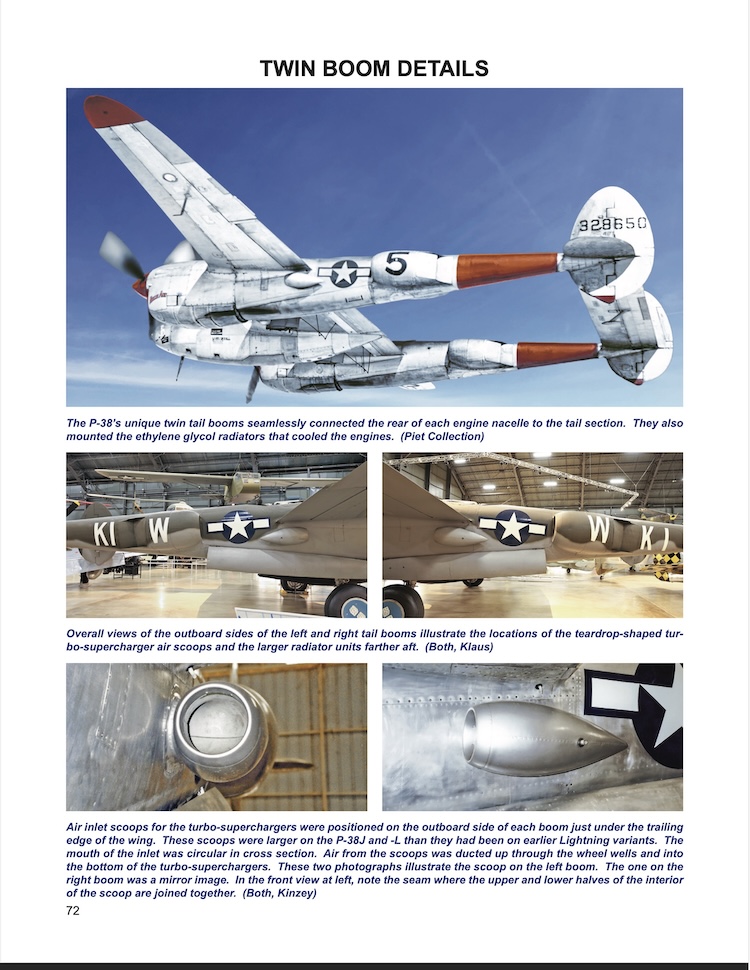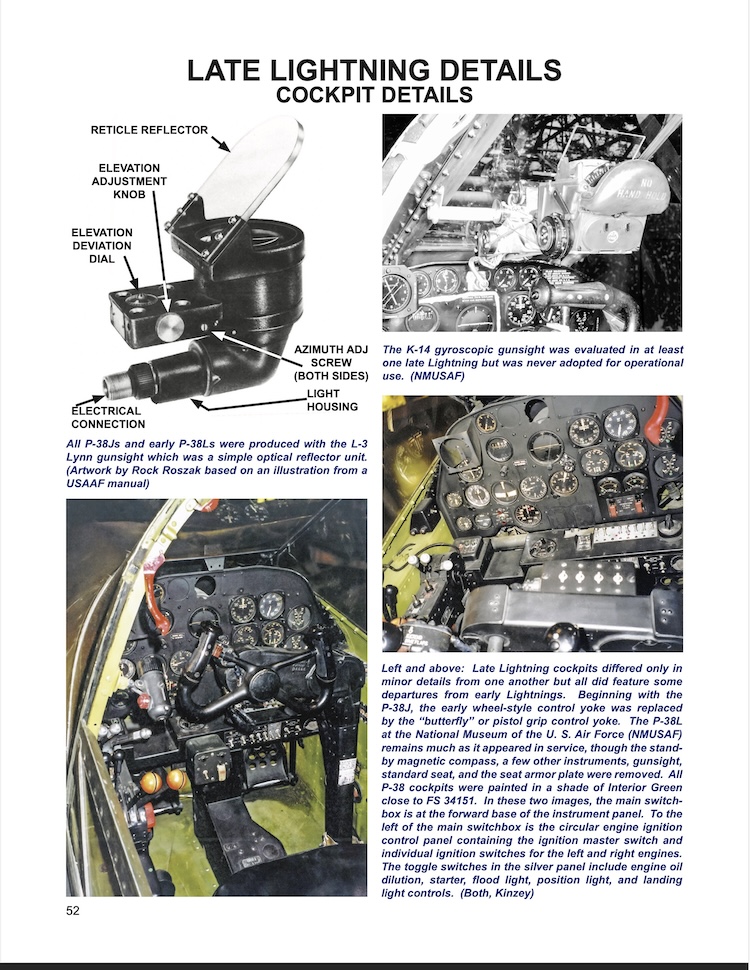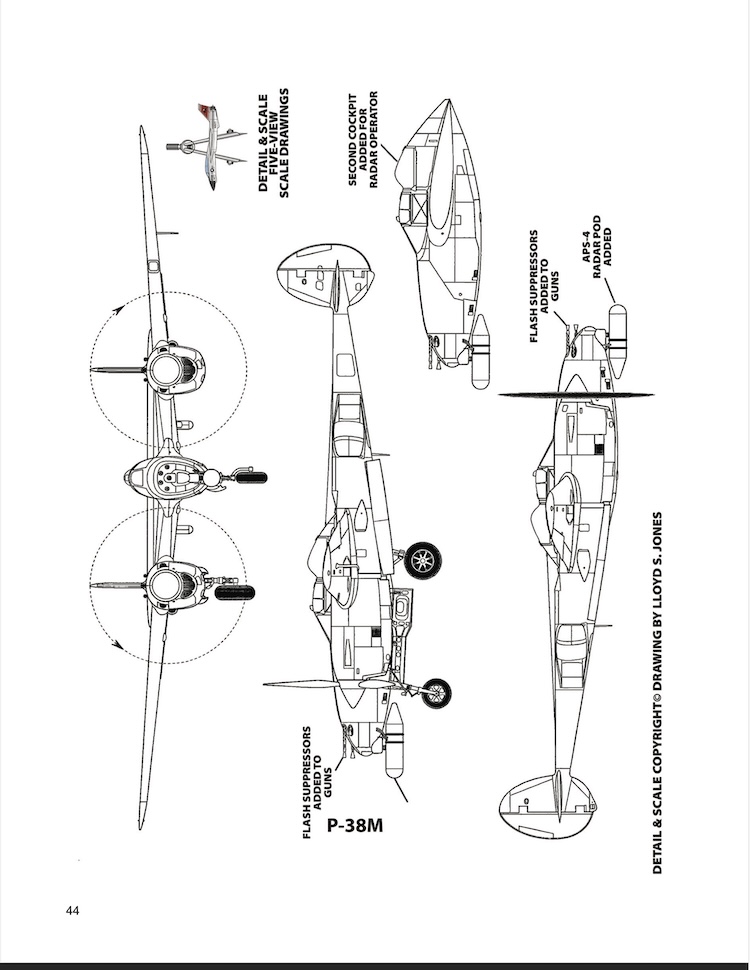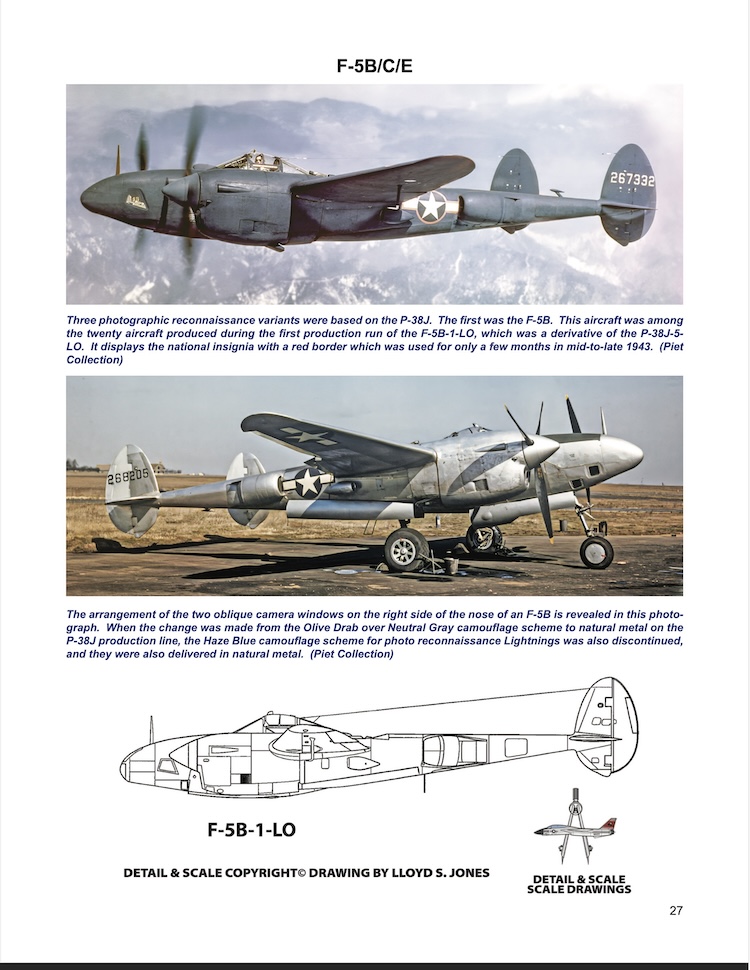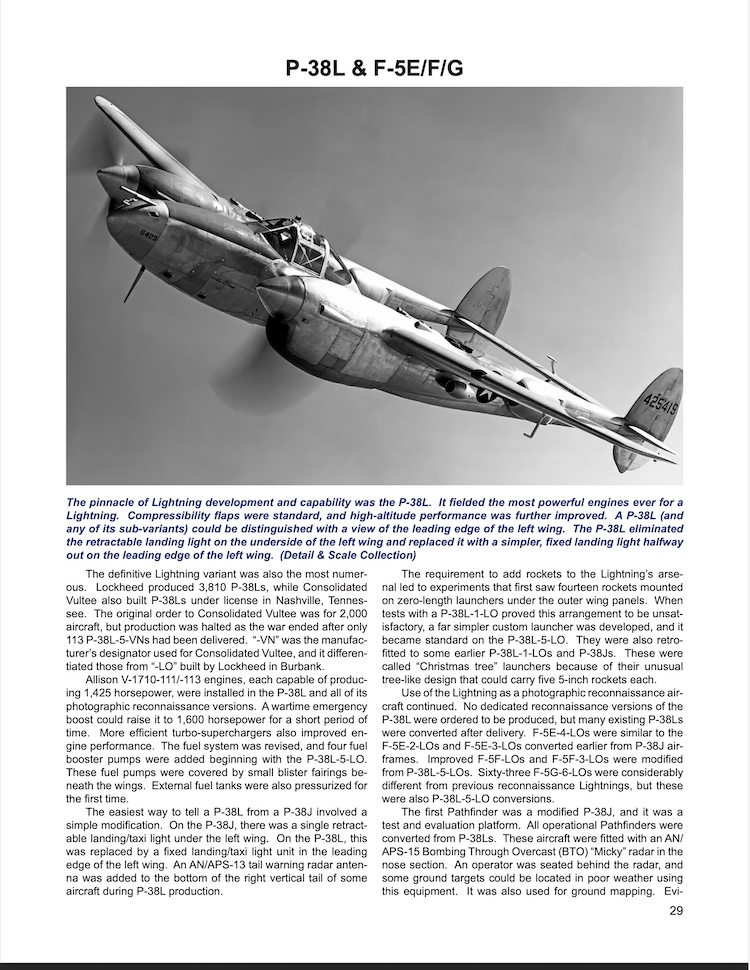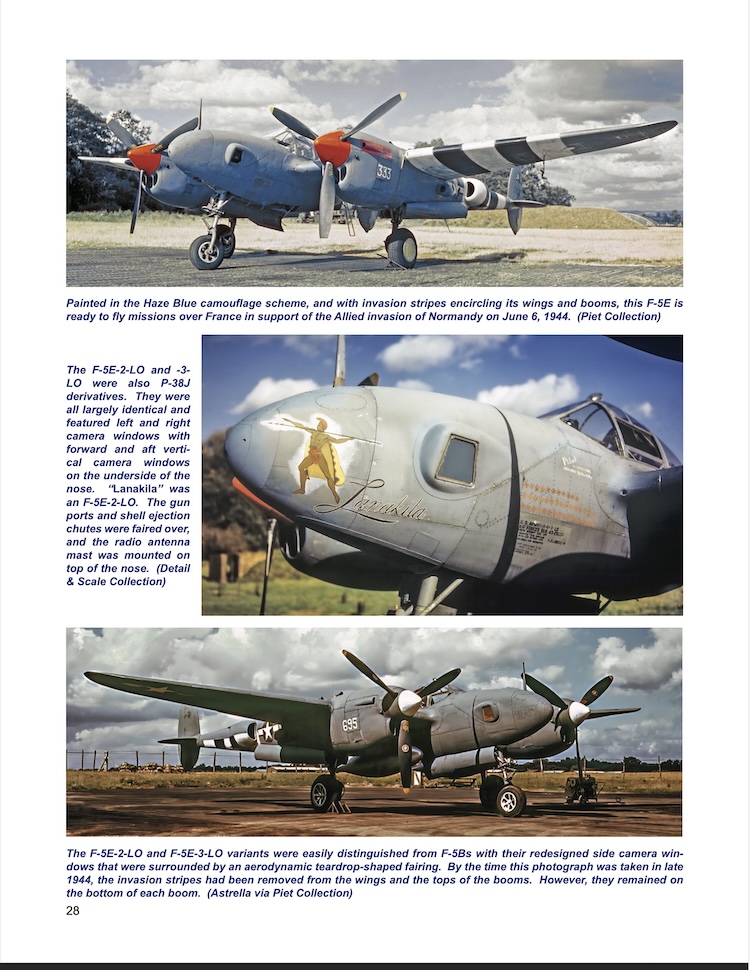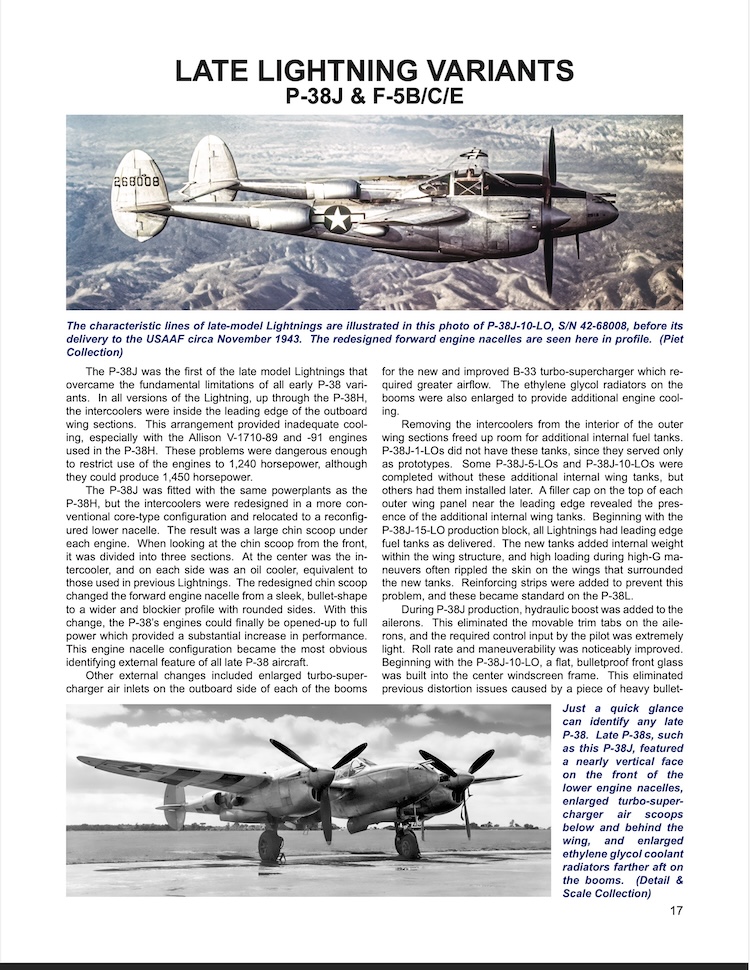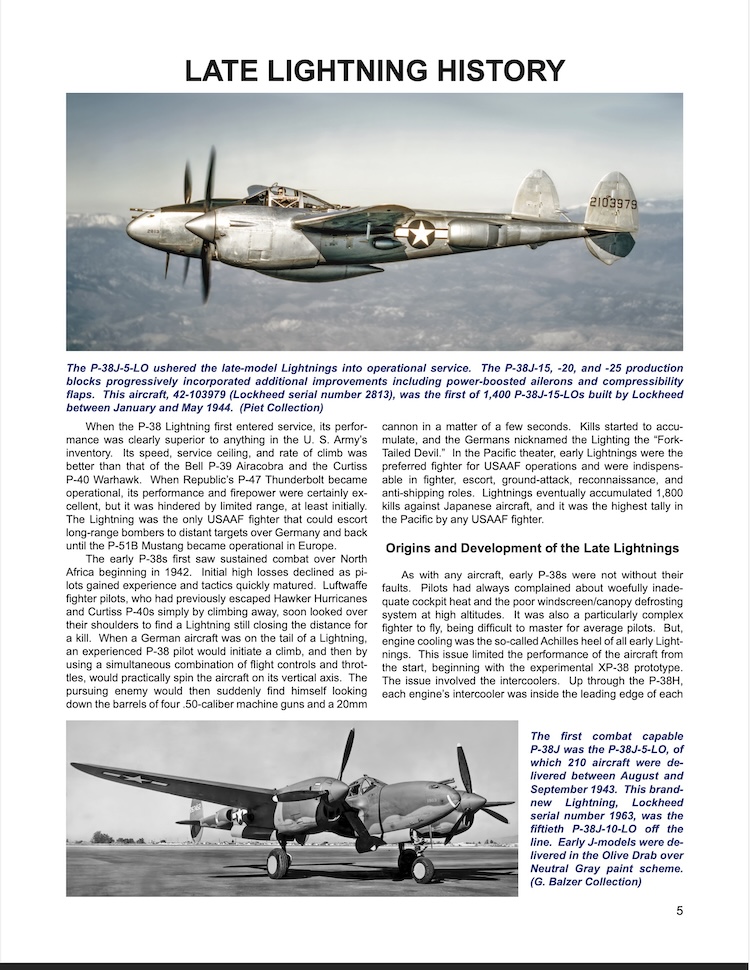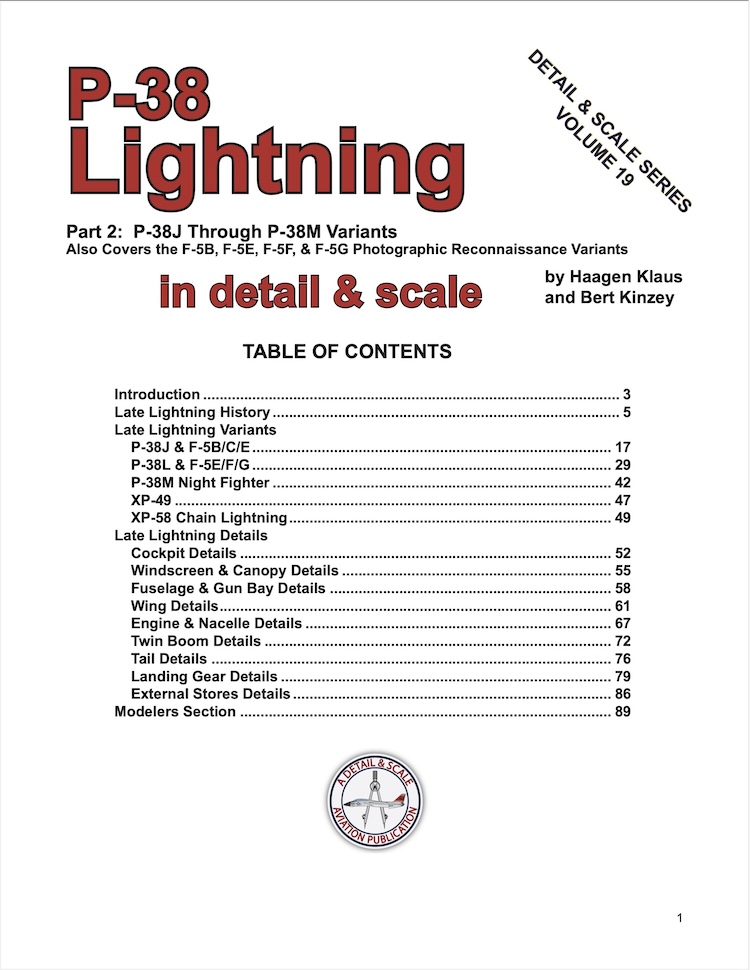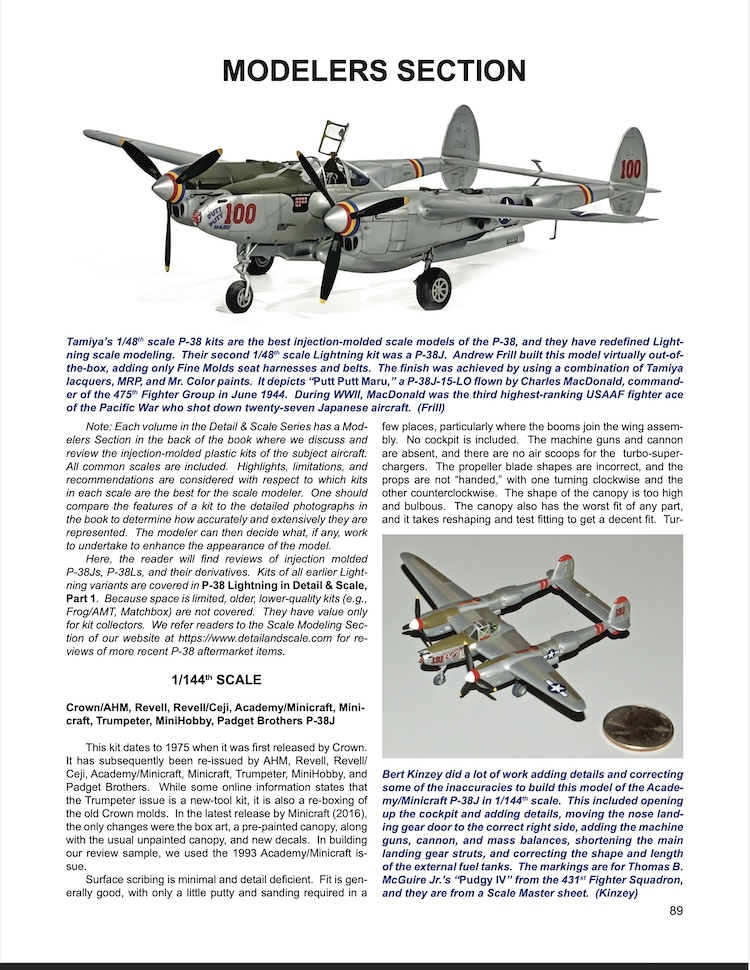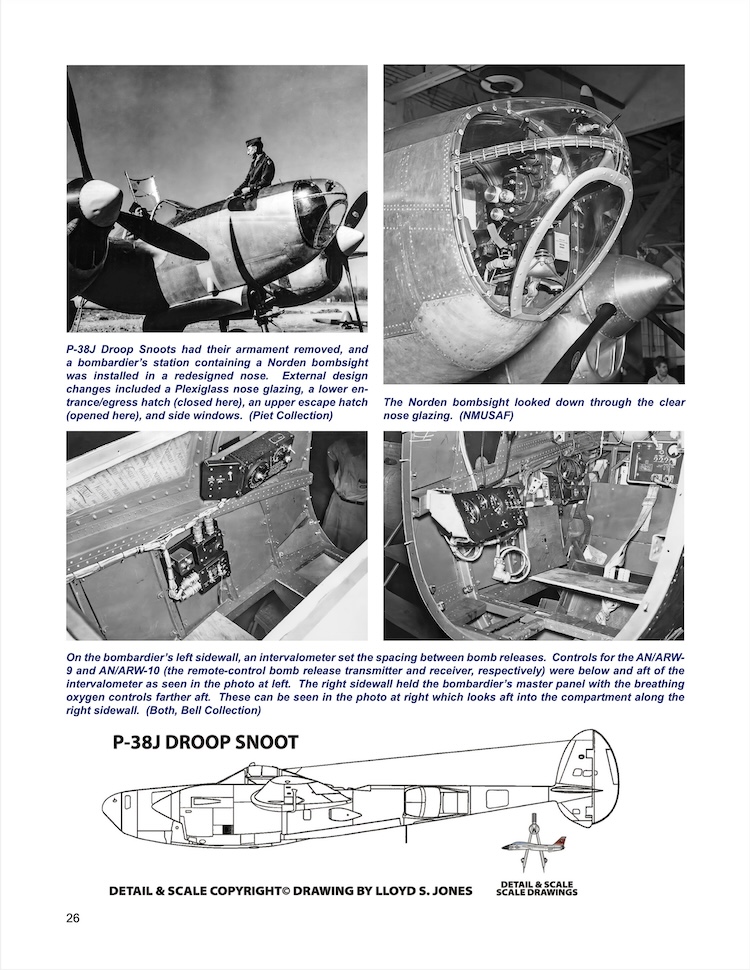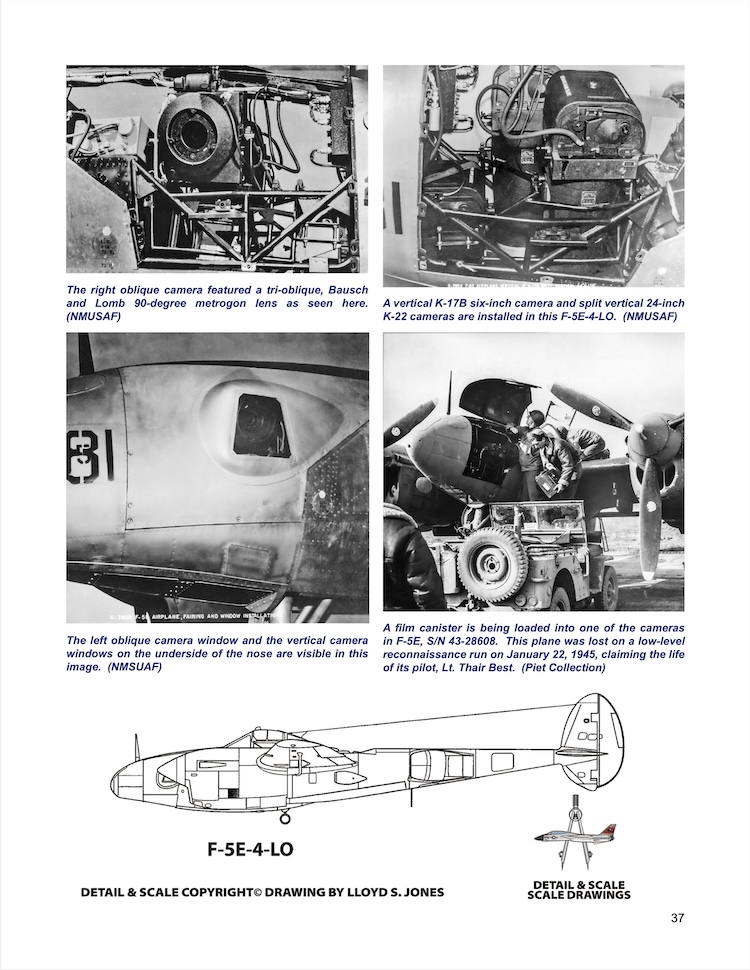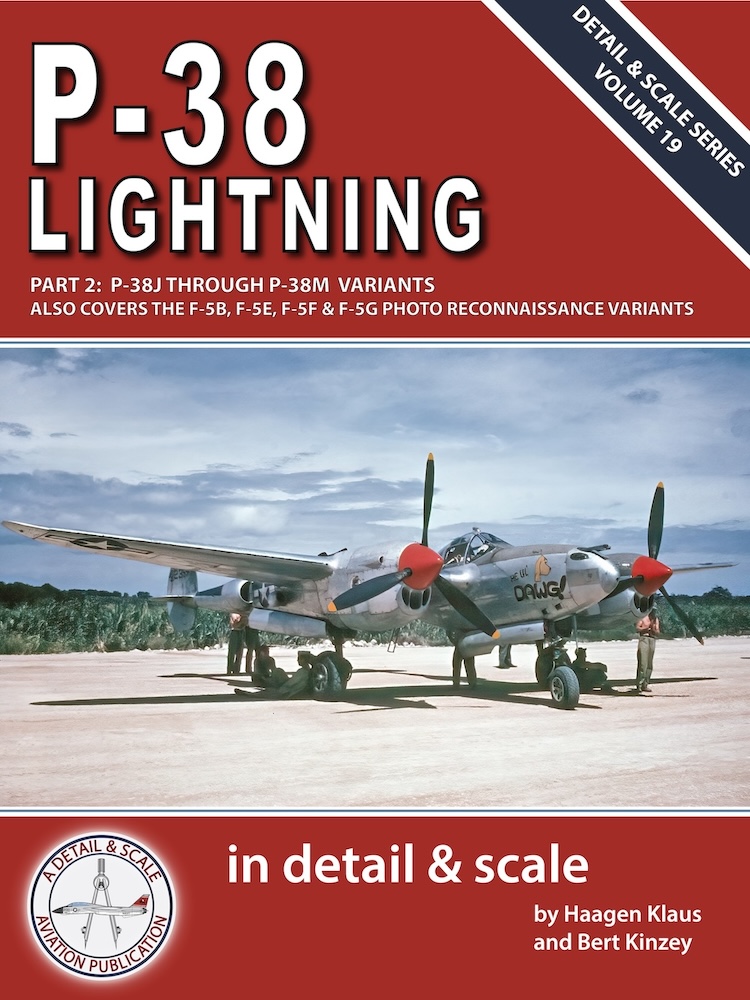
P-38 Lightning in Detail & Scale, Part 2
P-38J Through P-38M Variants (Also Covers the F-5B, F-5E, F-5F & F-5G Photo Reconnaissance Variants)
Book Features:
Lockheed’s P-38 Lightning was a unique aircraft, even on the drawing board. When the prototype XP-38 first flew in January 1939, it was the fastest fighter plane of its day. It also possessed the longest range and had the heaviest armament of any fighter. Each subsequent version improved upon the preceding one. Early versions of the Lightning faced significant operational issues. British fuels in the United Kingdom had some incompatibilities with the P-38’s exhaust-driven turbo supercharged engines. In all theaters, the early Lightnings dealt with high-speed compressibility issues and chronic engine cooling problems.
The compressibility and engine cooling issues were overcome with the late Lightning variants, first delivered to the U. S. Army Air Forces in August 1943. These aircraft were the most refined and definitive P-38s. They played no small role in the successful conclusion of World War II by the Allies, especially in the Pacific Theater.
In 1998, Detail & Scale published two books on the P-38 Lightning. These publications were very popular but have long been out of print. This publication is P-38 Lightning in Detail and Scale, Part 2. It is the second half of a pair of newly expanded, updated, and revised editions of Detail & Scale’s previous two-part coverage of the Lightning. Part 1 (Detail and Scale Series Volume 18) focuses on the XP-38 prototype through the P-38H and all associated photographic reconnaissance variants. This new P-38 Lightning in Detail and Scale Part 2 (Detail and Scale Series Volume 19) is similarly updated to cover the late Lightnings; the P-38J through P-38M variants, the F-5B through F-5G photo recon aircraft, and the Droop Snoot and Pathfinder special-purpose variants. The XP-49 and XP-58, which were based on the Lightning, are also briefly examined.
This publication features expanded and revised historical overviews of the later-model P-38s, along with detailed descriptions of each variant. Also included are numerous line drawings, created by Lloyd Jones specifically for Detail & Scale, that point out the specific changes made to each variant as the design was continuously improved. The Late Lightning Details chapter features new and expanded content compared to the original 1998 book. The chapter is illustrated with scores of detailed and meticulously restored photographs accompanied by captions that explain both important features and subtle differences between P-38 variants. While some of these images are original archival material, the great majority were chosen from hundreds of photos taken specifically for this book by the authors and their contributors.
As is the case in all volumes in the Detail & Scale Series, a Modelers Section provides comprehensive reviews of the plastic model kits of the featured aircraft. Since the original release of this publication, the world of P-38 scale modeling has been particularly impacted by the release of the Tamiya 1/48th scale P-38J and the Trumpeter 1/32nd scale P-38L. These kits, and many more dating back to the 1960s, are examined in depth. Recommendations are made as to which kits in each scale are best, and suggestions for corrections and improvements are presented.
P-38 Lightning in Detail & Scale, Part 2 contains 270 high-resolution photographs, almost 190 of which are in color. The details chapter alone has 169 photos, including 145 color images.
A DETAIL & SCALE SERIES BOOK
Print: 102 pages, 270 photos (189 in color), and 17 illustrations
Digital: 148 pages, 270 photos (189 in color), and 17 drawings
Need a Kindle Reading App?
You can read the Kindle version of our books on Smartphones, Computers, Tablets and even a Cloud Reader where you can read our books in your web browser.
Digital: 148 pages, 270 photos (189 in color), and 17 drawings
Need the Apple iBook App?
You can read the iBook version of our book on the Apple iPad or on any Mac Computer.
Click here to go to the iTunes Store for the free download of the iBooks App.
Digital: 148 pages, 270 photos (189 in color), and 17 drawings
Need the Google Play eBook App?

